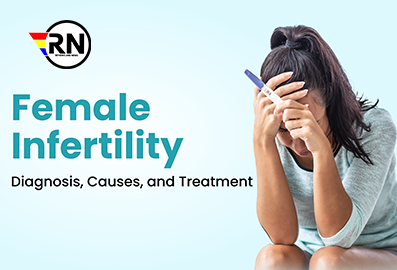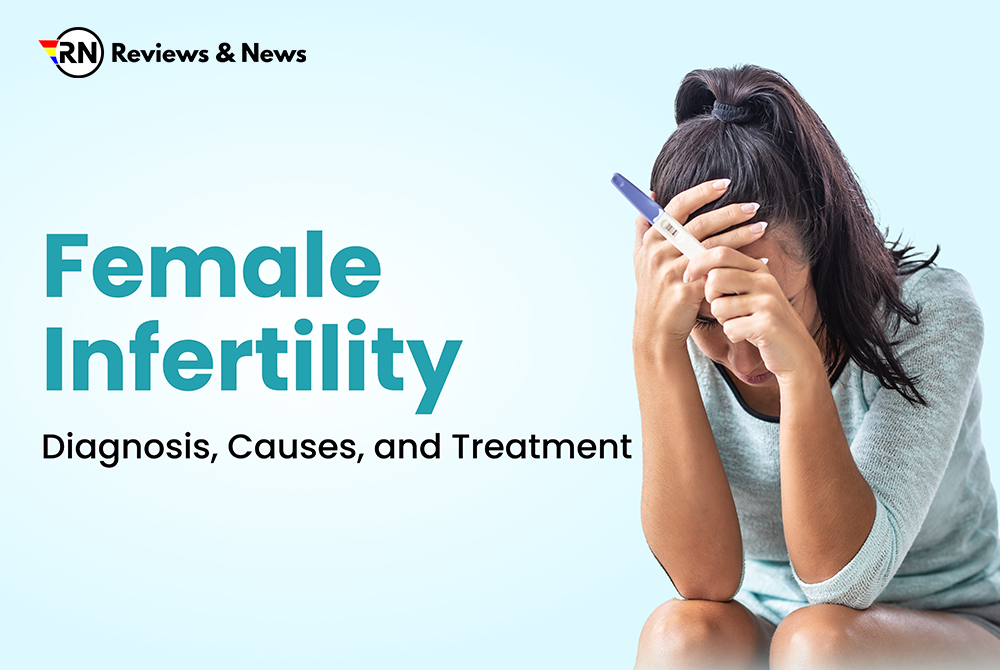Introduction to Female Infertility
Definition of Infertility
Ever wondered what infertility really means? In simple terms, infertility is the inability to conceive despite having regular unprotected intercourse for at least a year. It can be both a heart-wrenching and frustrating experience for many couples.
Or
A common condition, female infertility is an inability to get pregnant and have a successful pregnancy. This is typically diagnosed after a woman has tried to get pregnant (through unprotected sex) for 12 months without a pregnancy. There are many treatment options for infertility, including medications to correct hormonal issues, surgery for physical problems and in vitro fertilization (IVF).
The Stigma Associated with Infertility
Isn’t it surprising how something so common can carry such a heavy societal stigma? Unfortunately, many cultures wrongly blame the woman, adding emotional stress to an already challenging situation.
Main Causes of Female Infertility
Ovulatory Disorders
One of the major culprits behind female infertility? Ovulatory disorders. Picture this: Your body’s monthly egg release gets disrupted. Without that egg, conception becomes a distant dream.
Tubal Obstruction
Imagine a highway with a major roadblock. That’s what tubal obstruction feels like for the sperm – it can’t reach the egg because of a block in the fallopian tubes.
Uterine or Cervical Causes
Think of the uterus and cervix as the welcoming committee for the sperm. If they’re not in top shape, the sperm might just turn away, leading to infertility.
Risk Factors
Age
Ever heard the phrase, “The clock is ticking?” When it comes to female fertility, age indeed plays a pivotal role. As a woman gets older, her egg quality and quantity can diminish.
Lifestyle Choices
Can a night out or that extra cup of coffee affect fertility? Surprisingly, excessive alcohol, caffeine, and certain lifestyle habits can impact your chances of conception.
Medical History
Like a shadow from the past, some medical treatments or surgeries can come back to affect fertility in the long run.
Symptoms and Causes
What causes female infertility?
There are many possible causes of infertility. However, it can be difficult to pinpoint the exact cause, and some couples have “unexplained” infertility or “multifactorial” infertility (multiple causes, often both male and female factors). Some possible causes of female factor infertility can include:
- Problems with the uterus: This includes polyps, fibroids, septum or adhesions inside the cavity of the uterus. Polyps and fibroids can form on their own at any time, whereas other abnormalities (like a septum) are present at birth. Adhesions can form after a surgery like a dilation and curettage (D&C).
- Problems with the fallopian tubes: The most common cause of “tubal factor” infertility is pelvic inflammatory disease, usually caused by chlamydia and gonorrhea.
- Problems with ovulation: There are many reasons why a woman may not ovulate (release an egg) regularly. Hormonal imbalances, a past eating disorder, substance abuse, thyroid conditions, severe stress and pituitary tumors are all examples of things that can affect ovulation.
- Problems with egg number and quality: Women are born with all the eggs they will ever have, and this supply can “run out” early before menopause. In addition, some eggs will have the wrong number of chromosomes and cannot fertilize or grow into a healthy fetus. Some of these chromosomal issues (such as “balanced translocation”) may affect all of the eggs. Others are random but become more common as a woman gets older.
Diagnosis and Treatment
How Infertility is Diagnosed
Curious about how doctors pinpoint the cause? Through a series of tests and evaluations, specialists can identify the root cause of infertility.
Treatment Options
From medications to IVF, the road to treating infertility is as diverse as its causes. It’s like having an arsenal of tools, each tailored to tackle a specific challenge.
Coping and Support
Seeking Professional Help
Walking this journey alone? It doesn’t have to be that way. Consider seeking therapists or counselors familiar with the intricacies of infertility.
Joining Support Groups
Imagine a community of people who truly ‘get it’. Support groups can provide that haven, a place to share, vent, and find understanding.
Conclusion
Female infertility, while challenging, isn’t the end of the road. With advancements in medicine and a growing support community, hope remains. It’s a journey, and like all journeys, it’s filled with ups and downs. The key? Stay informed, seek support, and remember, you’re not alone.
Frequently Asked Questions
- Is infertility exclusive to women?
No, men can also face infertility issues. - At what age does female fertility start to decline?
Typically, a significant decline begins in the late 30s. - Can lifestyle modifications improve fertility?
Yes, healthy habits like a balanced diet, exercise, and avoiding smoking can positively impact fertility. - Are all infertility treatments invasive?
No, treatments range from medications to surgical procedures, depending on the cause. - How common is female infertility?
Approximately 1 in 10 women might experience infertility.

